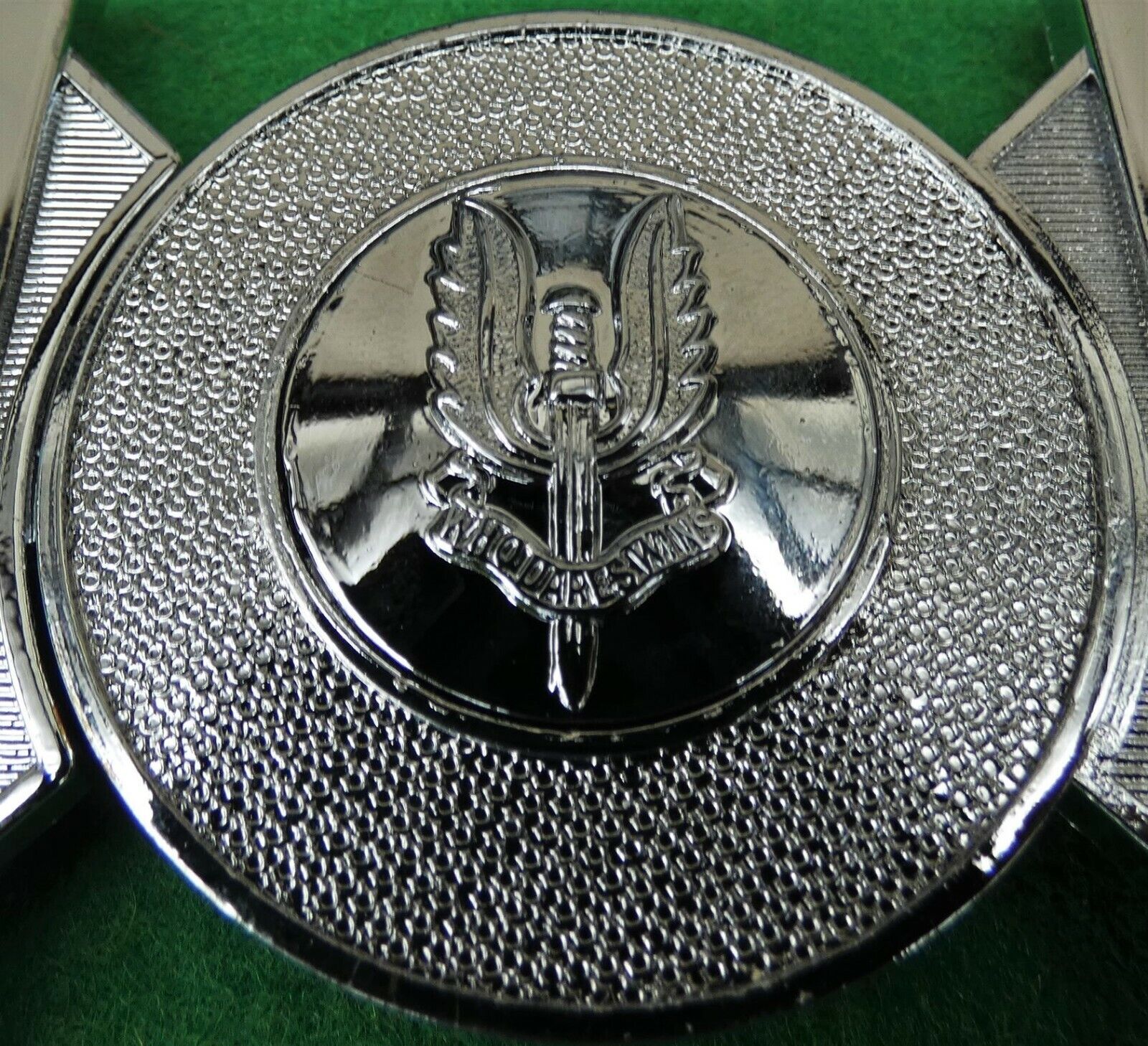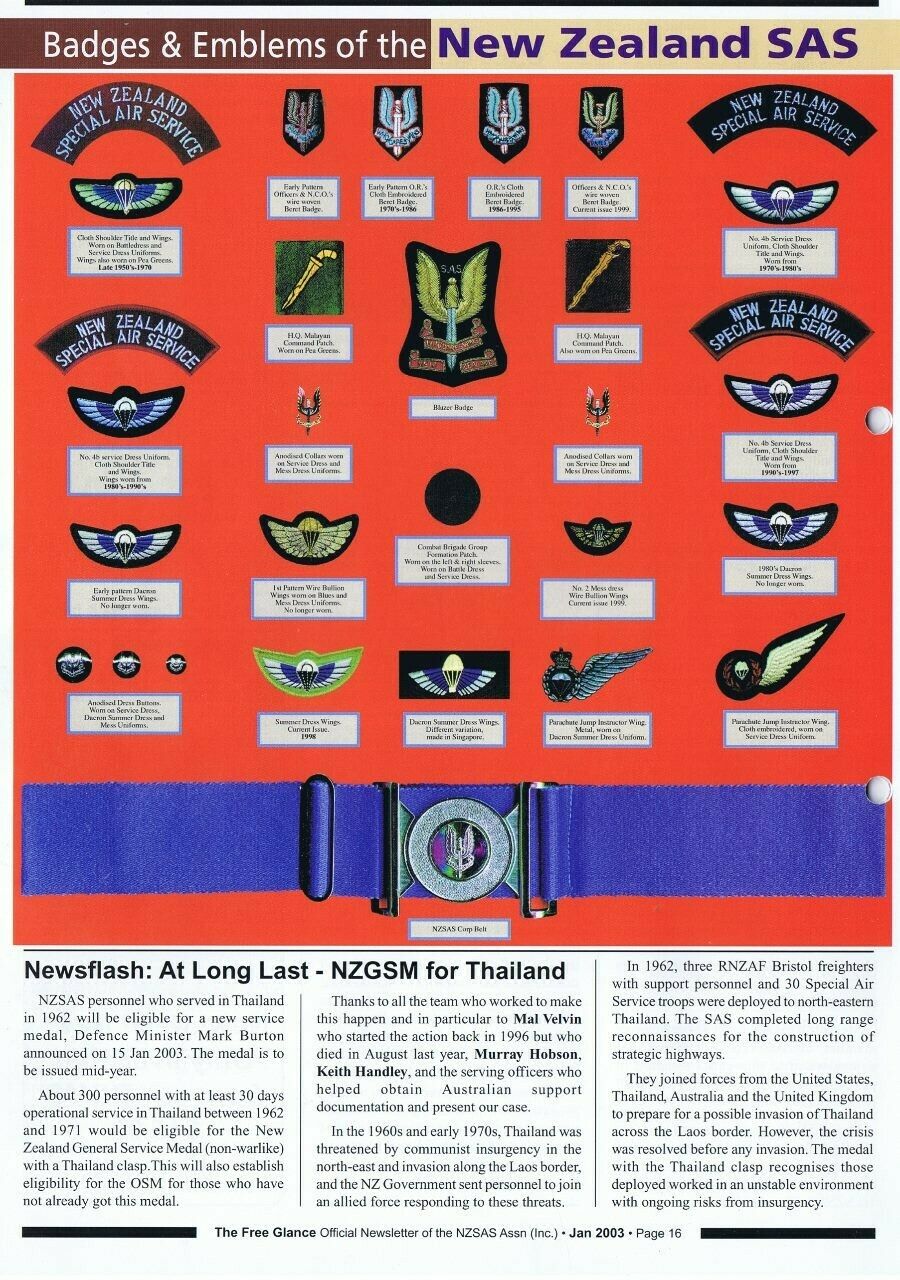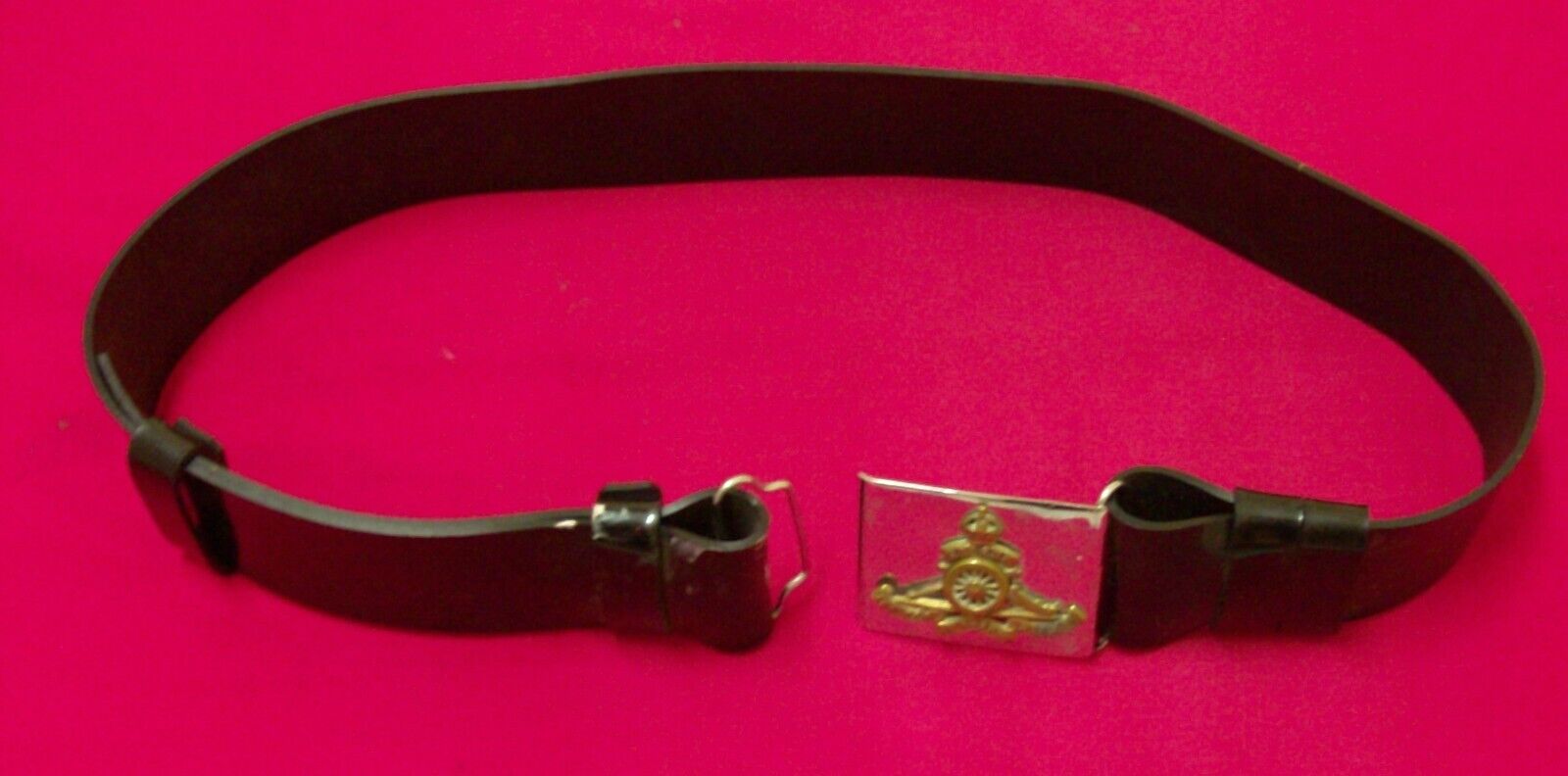-40%
SAS New Zealand Special Air Service STABLE BELT Buckle by Hobson & Son
$ 40.07
- Description
- Size Guide
Description
FIRST TYPE New Zealand Special Air Service S.A.S. "Stable Belt" BUCKLEMade in the UK by Hobson and Sons Ltd buckle-makers to the British Armed Forces and British Commonwealth military
This buckle is quite DISTINCTIVELY Different than the CURRENTLY WORN NZSAS Stable Belt buckle (Shown in my final image for comparison ONLY the 2nd buckle is NOT INCLUDED
New Zealand Special Air Service Stable Belt buckle
Originates from a similar belt worn by the British Special Air Service.
It was first worn in 1965 by 1 Detachment, 1 Ranger Squadron NZSAS.
This buckle would be worn with a wide blue "Stable Belt" as seen in the lower part of the reference image (Copied from the NZSAS Association's Newsletter "The Freeglance" 2003)
The blue belt-colour originates from a concept by David Stirling integrating the Oxford Blue and Cambridge Blue.
The term "stable belt" originates from when UK cavalrymen would place the surcingle around the waist when cleaning the stables and tending to their horses.
History
The NZSAS can trace its roots back to the famous Long Range Desert Group, AKA The L.R.D.G. a British/Commonwealth army unit which fought in the North African desert in World War II. The LRDG was originally manned 100% by New Zealand Volunteers
New Zealanders also served in the original Special Air Service force during World War II.
In February 1955, it was decided by the New Zealand Government that a squadron based on the British Special Air Service should be formed as part of the New Zealand Army, as an effective and economic contribution to the Far East Strategic Reserve and the British counter-insurgency effort in Malaya.
Major Frank Rennie was appointed to form and command the unit, with the decision having been made to recruit mainly from the general public around a cadre of Regular Force personnel. Over 800 applied, from which 182, including 138 civilians (though 101 had previous military experience) were selected for training beginning in June 1955.
In late 1957, soon after the squadron's return to New Zealand from Malaya, the unit was disbanded, having been operationally replaced by an infantry battalion.
The NZSAS was re-established in October 1959, with the unit celebrating its 50th Jubilee from 3–12 June 2005.
The NZSAS were granted the Freedom of the Borough of Thames on 27 September 1967.
As part of changes the NZDF's command structure, the 1st New Zealand Special Air Service Regiment was transferred to the command of the new Special Operations Command on 1 July 2015.
Unit location
When the unit was first established in 1955, prior to the departure to Malaya all training was conducted at Waiouru Military Camp. Upon re-establishment of the Squadron in October 1959, it was based at Papakura Military Camp, until the unit was relocated to Hobsonville Air Force Base in the mid-1990s, however the NZSAS Counter-Terrorism and demolitions training facilities remained at Papakura and Ardmore Military Camps. In 2001–2002 a new facility for the unit was built at Papakura Military Camp. The facility was named 'Rennie Lines', after the founding NZSAS Commanding Officer Major Frank Rennie and officially opened on 14 December 2002. The Battle Training Facility (BTF) was officially opened on 8 April 2016 in the Ardmore Military Training Area for counter-terrorist training to replace facilities over 30 years old.
Unit designation
On 1 May 1955, after the Cabinet had given its approval the 'New Zealand Special Air Service Squadron' was formally established. From 24 August 1963 the unit was renamed to '1 Ranger Squadron New Zealand Special Air Service', in recognition of the 'Forest Rangers' who fought in the New Zealand Wars being one of New Zealand's first Special Forces units. The unit reverted to '1st New Zealand Special Air Service Squadron' on 1 April 1978. From 1 January 1985 the unit was known as '1st New Zealand Special Air Services Group' until its re-designation as a Regiment before February 2013.
Dress distinctions
When the unit was established in 1955, approval was given for members to wear a maroon beret. The maroon beret was chosen as it was the then colour of the British Special Air Service beret. However, the British changed their beret colour to ecru (sandy-coloured) in late 1957, the same colour as had been worn by the SAS during the early stages of World War II. On 19 December 1985, approval was granted by the (then) New Zealand chief of general staff, Major General John Mace, who had previously deployed to Malaya with the original NZSAS Squadron, for the NZSAS to switch from maroon to the sandy-coloured beret worn by other Commonwealth Special Air Service units.
A parade was held on 21 March 1986 to formally hand the new beret over to the unit.
To show the close association between the NZSAS and the British Special Air Service, members of NZSAS are authorised to wear black rank on all orders of dress except mess dress and to wear black web belts whenever web belts are ordered to be worn.
ALL my items are GUARANTEED 100% GENUINE, the GUARANTEE is GOOD for "life" and INCLUDES the cost of POSTAGE both ways !! :-)
I have several badges currently listed please check my "seller's other listings"
ONLY ONE (1) postage charge PER ORDER
Buy MORE than ONE badge ?
NO additional postage charge required (as several badges will still be the same postal cost listed for one)
Do please VIEW my ***24 + years *** FEEDBACK selling history on E-Bay !!
Any questions ?? please message me :-)
Postage
First Class AirMail (6-10 DAYS)
USA, Canada, & ASIA ........................90
UK .......................................................90
EUROPE..............................................90
AUSTRALIA ............................ .90
New Zealand customers.......{{detail_product_description}}.00 FREE postage
SORRY New Zealand customers must pay GST @15% on purchase price :-(
Because we must PAY GST on all locally-delivered eBay sales
Track Page Views With
Auctiva's FREE Counter
Add a map to your own listings. FREE Trial !














